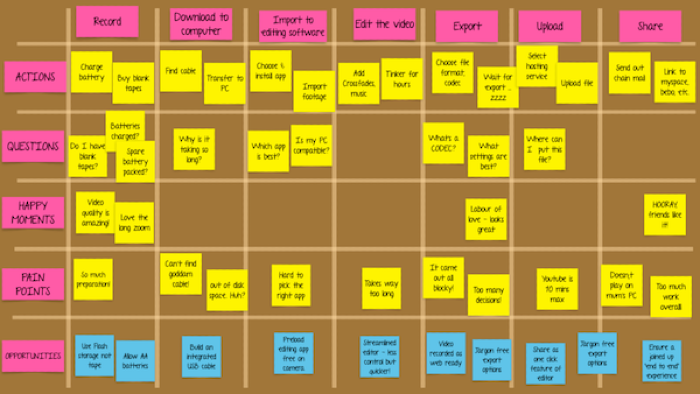
In my previous two blog articles, I described the importance of the Understanding phase of Customer Experience. The Understanding phase is a three-step process that underpins the Customer Experience strategy for an organization. The first two elements of the Understanding phase: conducting research in the forms of surveys and in-person contextual research are essential for organizations to gain insight into their Customer Experience from the perspective of its three key stakeholder groups: customers, employees, and leaders. These research methods create a solid foundation for the final component of the Understanding phase: journey mapping.
Journey mapping is a collaborative, visual and graphic interpretation of the overall story from a customer’s perspective of their relationship with an organization, service, product or brand, over time and across channels. It is an effective exercise for revealing key insights that shape decision making that solve an organization’s Customer Experience challenges. The best journey mapping sessions involve a mix of stakeholder participants from many areas of the organization, as well as people of varying levels of seniority. Journey maps are also helpful to gain internal consensus on how customers should be treated across distinct channels. Holding collaborative workshops with cross-disciplinary teams mixing people who otherwise never communicate with each other can be extremely valuable in organizations of various sizes.
Journey mapping is a valuable and strategic exercise because despite best intentions and mountains of data, many organizations continue to offer lackluster experiences for their customers. Many organizations function with an internal focus, and that becomes apparent when customers interact with their various products, services, and employees. Every interaction a customer has with an organization influences satisfaction, loyalty, and the bottom line. Plotting out a customer’s emotional landscape by way of a customer journey map along their path sheds light on key opportunities for deepening those relationships.
Customer engagement is not simply a series of interactions, or getting people to visit a website, “Like” something on Facebook, or download a mobile app. Genuine engagement centers on compatibility, and identifying how and where individuals and organizations can exist harmoniously together. Giving thought to how your organization/product/service/brand fits into customers’ lives is crucial.
Illustrating or describing how the customer experience could be brought to life across channels allows all stakeholders from all areas of the business to better understand the essence of the whole experience from the customer’s perspective. How do they want to be spoken to, what are they thinking, feeling, seeing, hearing, and doing? Journey maps help us explore answers to the “what ifs” that arise during research and conceptual design.
During the journey mapping session, we put together all the pieces: personas, timeline, touchpoints, channels, customer emotional highs and lows, and all the wonderful new ideas the team generated for how to improve the future customer journey.
On the surface, journey mapping sessions don’t appear to be a sophisticated deliverable — they involve sticky notes on craft paper. However, when organizations go through the activities to arrive at a solid customer journey map, the finished polished digitized version is an essential tool intended to be shared with colleagues across an organization and used to leverage strategic objectives.
Journey mapping is a strategic imperative for organizations committed to designing and delivering better Customer Experiences. All organizations have business goals but leveraging customer journeys as a supporting component of an experience strategy keeps customers at the forefront when making design decisions. They can be used in both current state review and future state visioning to examine the present, highlight pain points and uncover the most significant opportunities for building a better experience for customers, and can serve as a backbone for strategic recommendations and more tactical initiatives.
--About the Author - James Grieve CMC, MBA
James Grieve is a Certified Management Consultant and partner in Nucleus Strategies, a Kelowna-based consulting firm that specializes in working with businesses in a variety of industries to design great service experiences that delight customers and improve business performance. For over 20 years James' consulting career has been well balanced among: strategic planning, marketing strategy, project management, change management, B2B and B2C sales, customer experience design, and business development, with emphasis on building, nurturing, and sustaining client relationships.
He can be reached at 778.214.6010, or james@nucleus-strategies.com.



